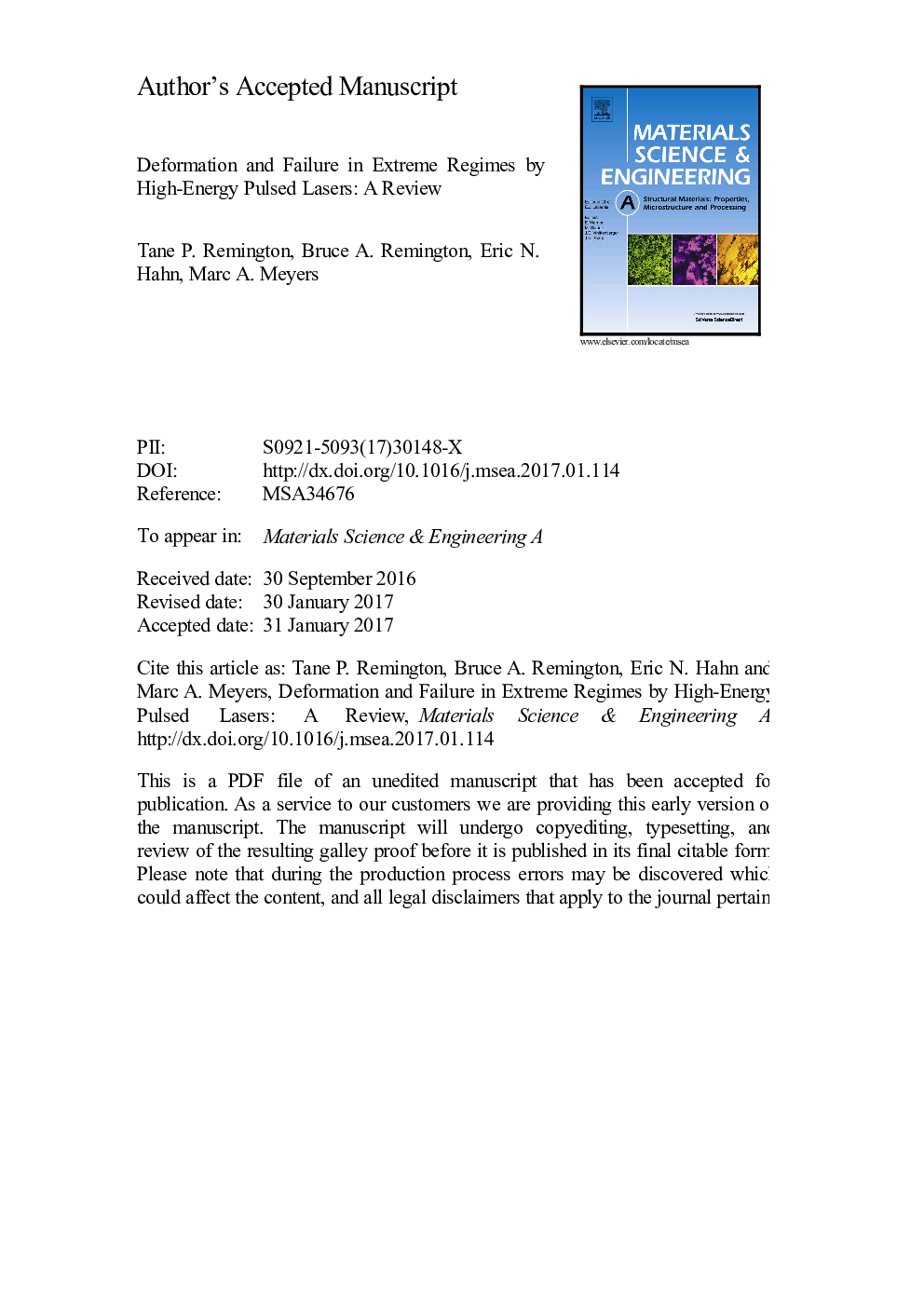| Article ID | Journal | Published Year | Pages | File Type |
|---|---|---|---|---|
| 5456168 | Materials Science and Engineering: A | 2017 | 103 Pages |
Abstract
The use of high-power pulsed lasers to probe the response of materials at pressures of hundreds of GPa up to several TPa, time durations of nanoseconds, and strain rates of 106-101° sâ1 is revealing novel mechanisms of plastic deformation, phase transformations, and even amorphization. This unique experimental tool, aided by advanced diagnostics, analysis, and characterization, allows us to explore these new regimes that simulate those encountered in the interiors of planets. Fundamental Materials Science questions such as dislocation velocity regimes, the transition between thermally-activated and phonon drag regimes, the slip-twinning transition, the ultimate tensile strength of metals, the dislocation mechanisms of void growth are being answered through this powerful tool. In parallel with experiments, molecular dynamics simulations provide modeling and visualization at comparable strain rates (108-1010 sâ1) and time durations (hundreds of picoseconds). This powerful synergy is illustrated in our past and current work, using representative face-centered cubic (fcc) copper, body-centered cubic (bcc) tantalum and diamond cubic silicon as model structures.
Related Topics
Physical Sciences and Engineering
Materials Science
Materials Science (General)
Authors
Tane P. Remington, Bruce A. Remington, Eric N. Hahn, Marc A. Meyers,
